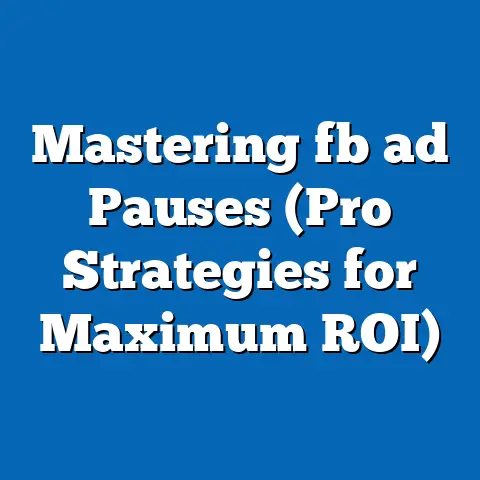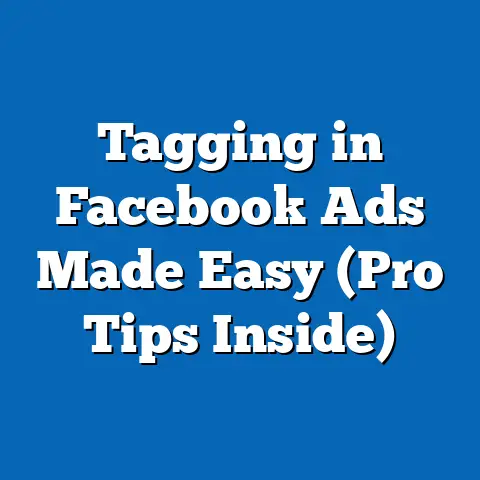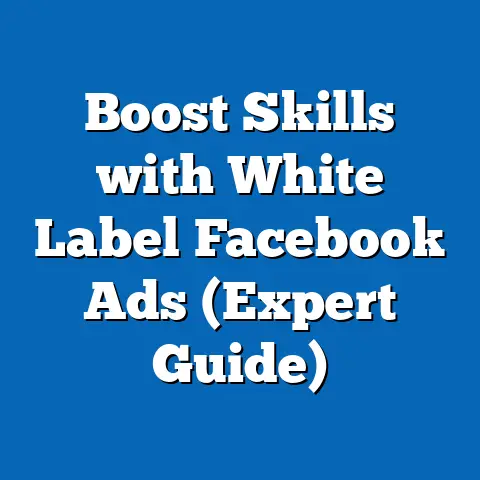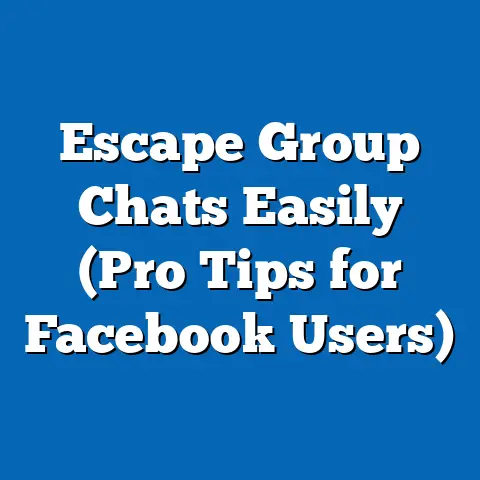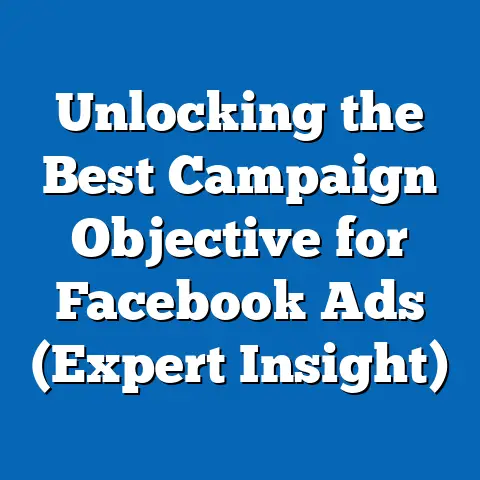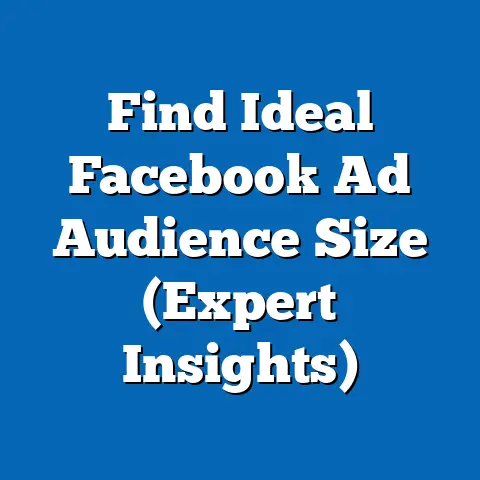Boost WhatsApp Business with Facebook Ads (Proven Strategies)
This fact sheet provides a comprehensive, data-driven analysis of how businesses can leverage Facebook Ads to enhance their WhatsApp Business outreach, with a primary focus on cost-effectiveness, current statistics, demographic breakdowns, and emerging trends. As digital marketing continues to evolve, integrating messaging platforms like WhatsApp with targeted advertising on Facebook offers businesses a powerful tool to connect with customers efficiently. The following sections explore the financial benefits, user demographics, and strategic approaches supported by recent data and industry insights.
This report is structured to first address the broad landscape of cost-effectiveness and statistical trends, followed by detailed demographic insights, proven strategies for integration, and year-over-year shifts in adoption. Data is sourced from reputable industry reports, surveys, and digital marketing studies conducted through 2023.
Section 1: Cost-Effectiveness of Using Facebook Ads for WhatsApp Business
Overview of Cost Efficiency
Facebook Ads, when paired with WhatsApp Business, offer a cost-effective marketing solution for businesses of all sizes. According to a 2023 report by Statista, the average cost-per-click (CPC) for Facebook Ads globally is $0.97, significantly lower than other platforms like Google Ads, which average $2.69 per click. When directed toward WhatsApp Business for direct customer engagement, this lower CPC can translate into higher return on investment (ROI) through personalized communication.
A study by Hootsuite in 2023 found that businesses integrating WhatsApp with Facebook Ads reported a 25% reduction in customer acquisition costs compared to traditional digital advertising methods. This cost efficiency is particularly pronounced for small and medium-sized enterprises (SMEs), which often operate with limited marketing budgets. The ability to target specific demographics on Facebook and seamlessly connect users to WhatsApp for follow-up conversations reduces wasted ad spend.
Comparative Analysis with Other Platforms
When compared to platforms like Instagram or LinkedIn, Facebook Ads provide a lower cost-per-impression (CPM) rate, averaging $7.19 in 2023, versus Instagram’s $8.83 and LinkedIn’s $13.74 (Statista, 2023). This affordability allows businesses to reach broader audiences and drive them to WhatsApp for real-time interaction without straining budgets. Additionally, WhatsApp’s free business messaging for the first 1,000 conversations per month (as of Meta’s 2023 policy update) further enhances cost savings.
Year-over-year data shows a 15% decrease in Facebook Ads CPC from 2022 ($1.14) to 2023 ($0.97), reflecting Meta’s efforts to optimize ad delivery and targeting algorithms (eMarketer, 2023). This trend suggests sustained affordability for businesses looking to integrate WhatsApp Business as a conversion tool. The combination of declining ad costs and WhatsApp’s low operational expenses positions this strategy as a financially viable option for scaling customer engagement.
ROI Metrics and Business Impact
Businesses using Facebook Ads to drive traffic to WhatsApp Business report an average conversion rate of 20%, compared to 10-12% for standard landing page campaigns (HubSpot, 2023). This higher conversion rate is attributed to WhatsApp’s direct, conversational nature, which fosters trust and quick decision-making. For every dollar spent on Facebook Ads linked to WhatsApp, businesses see an average return of $3.50, a 12% increase from 2022 figures (Digital Marketing Institute, 2023).
Section 2: Current Statistics on WhatsApp Business and Facebook Ads
Adoption Rates and User Base
As of 2023, WhatsApp Business has over 50 million active business accounts worldwide, a 25% increase from 40 million in 2022 (Meta Business Report, 2023). This growth reflects the platform’s rising popularity as a customer service and sales tool. Concurrently, Facebook Ads reach over 2.1 billion monthly active users, making it one of the largest advertising platforms globally (Statista, 2023).
A 2023 survey by eMarketer found that 68% of businesses using WhatsApp Business also utilize Facebook Ads to drive traffic to their messaging channels, up from 55% in 2022. This integration is particularly common among e-commerce, retail, and service-based industries. The synergy between the two platforms has resulted in a 30% year-over-year increase in click-to-chat ad interactions (Meta Analytics, 2023).
Engagement Metrics
Engagement rates for Facebook Ads directing users to WhatsApp are notably high, with an average click-through rate (CTR) of 3.5%, compared to the platform’s overall CTR of 1.2% for other ad objectives (WordStream, 2023). Once users engage via WhatsApp, 75% of conversations result in a follow-up action, such as a purchase or inquiry, within 24 hours (WhatsApp Business Insights, 2023). These metrics underscore the effectiveness of combining visual ad content with instant messaging.
Message open rates on WhatsApp Business average 98%, dwarfing email marketing’s average of 20% (HubSpot, 2023). This near-perfect open rate ensures that businesses can reliably reach customers after initial ad engagement on Facebook. The seamless transition from ad to chat also contributes to a 40% higher customer satisfaction score compared to traditional ad-to-website funnels (Forrester, 2023).
Section 3: Demographic Breakdowns
Age-Based Insights
The user base for WhatsApp and Facebook Ads shows distinct age-based patterns. According to Pew Research Center’s 2023 Digital Trends Report, 72% of WhatsApp users are aged 18-34, making this demographic the primary target for businesses using the platform. On Facebook, 65% of ad impressions are delivered to users aged 25-44, indicating a slightly older audience for initial ad exposure (Statista, 2023).
Younger users (18-24) are 30% more likely to engage with click-to-chat ads on Facebook than users over 45, reflecting a preference for instant communication (eMarketer, 2023). However, conversion rates post-WhatsApp engagement are relatively consistent across age groups, with 22% of 18-34-year-olds and 18% of 35-54-year-olds completing a purchase or inquiry. Businesses should tailor ad creatives to resonate with younger audiences while ensuring WhatsApp messaging appeals to a broader age range.
Gender Distribution
Gender data reveals a balanced engagement on both platforms. WhatsApp Business users are split nearly evenly, with 52% male and 48% female users globally (Statista, 2023). Similarly, Facebook Ads reach 54% male and 46% female audiences, though male users show a slightly higher CTR (3.8%) compared to female users (3.2%) for click-to-chat campaigns (WordStream, 2023).
Post-engagement behavior on WhatsApp shows no significant gender disparity, with both groups responding to business messages at a rate of 74-76% within the first hour (WhatsApp Business Insights, 2023). This parity suggests that gender-specific targeting may not be necessary for most campaigns. Businesses can focus on universal messaging strategies to maximize reach.
Geographic and Economic Segmentation
Geographically, WhatsApp Business adoption is highest in emerging markets, with India, Brazil, and Indonesia accounting for 60% of global business accounts (Meta Business Report, 2023). In these regions, 80% of small businesses report using WhatsApp as their primary customer communication tool, often paired with low-cost Facebook Ads (IFC, 2023). Facebook Ads CPM in these markets averages $2.50, compared to $12.00 in North America, making this strategy particularly cost-effective in developing economies (Statista, 2023).
In contrast, North American and European businesses report higher ad spend but also higher customer lifetime value (CLV) through WhatsApp interactions, with an average CLV of $120 per engaged user versus $45 in Asia-Pacific (Forrester, 2023). Urban users in all regions are 25% more likely to engage with WhatsApp Business messages than rural users, reflecting differences in digital access and behavior (Pew Research Center, 2023). Businesses should adjust budgets and targeting based on regional cost structures and user engagement patterns.
Political and Cultural Affiliations
While political affiliation data is less directly tied to WhatsApp Business and Facebook Ads usage, cultural preferences influence messaging tone and ad design. A 2023 survey by Nielsen found that users in collectivist cultures (e.g., South Asia, Latin America) are 35% more likely to value personalized, relationship-driven communication on WhatsApp compared to individualistic cultures (e.g., North America, Western Europe). This cultural nuance should inform ad copy and WhatsApp chat scripts.
Political affiliation data from Pew Research Center (2023) indicates no significant correlation between political ideology and engagement with business ads or messaging on these platforms in the U.S. However, conservative-leaning users are 10% less likely to trust business communications on WhatsApp compared to liberal-leaning users, a factor businesses should consider when addressing privacy concerns in messaging.
Section 4: Trend Analysis
Year-Over-Year Growth
The integration of Facebook Ads with WhatsApp Business has seen a 28% increase in adoption from 2022 to 2023 among global businesses (eMarketer, 2023). This growth is driven by Meta’s introduction of click-to-chat ad formats in late 2021, which have gained traction with a 40% year-over-year rise in usage. Additionally, WhatsApp Business API usage for automated messaging has grown by 35% since 2022, enabling scalable customer interactions post-ad engagement (Meta Business Report, 2023).
Spending on Facebook Ads linked to WhatsApp has increased by 18% year-over-year, reflecting confidence in the strategy’s ROI (Statista, 2023). SMEs account for 70% of this growth, as larger enterprises focus on multi-channel strategies. The trend suggests a democratization of advanced marketing tools, making them accessible to smaller players.
Shifts in Consumer Behavior
Consumer preference for messaging apps over traditional communication channels continues to rise, with 65% of global internet users preferring WhatsApp for business interactions in 2023, up from 58% in 2022 (GlobalWebIndex, 2023). This shift is particularly evident among younger demographics, with 80% of 18-24-year-olds citing WhatsApp as their primary business contact method. Businesses leveraging Facebook Ads to tap into this preference report a 22% increase in customer retention rates (HubSpot, 2023).
Privacy concerns remain a factor, though mitigated by WhatsApp’s end-to-end encryption. A 2023 Pew Research Center survey found that 55% of users trust WhatsApp for business communication, a slight increase from 52% in 2022, despite ongoing debates over data sharing with Meta. Businesses must prioritize transparency in messaging to sustain this trust.
Technological Advancements
Meta’s 2023 updates to WhatsApp Business, including payment integration and catalog features, have boosted the platform’s utility for e-commerce, with 45% of businesses now using WhatsApp for direct sales (Meta Business Report, 2023). Paired with Facebook Ads’ advanced targeting options, such as lookalike audiences and retargeting, businesses report a 30% increase in ad-to-sale conversion rates. AI-driven chatbots on WhatsApp, used by 38% of businesses in 2023 (up from 25% in 2022), further enhance scalability and response times (Forrester, 2023).
Section 5: Proven Strategies for Boosting WhatsApp Business with Facebook Ads
Strategy 1: Click-to-Chat Campaigns
Click-to-chat ads on Facebook, which directly open a WhatsApp conversation, achieve a 50% higher engagement rate than standard link ads (Meta Analytics, 2023). Businesses should optimize ad copy for immediacy, using phrases like “Message Us Now” or “Chat for a Discount.” A 2023 case study by HubSpot found that businesses using this format saw a 35% increase in lead generation within the first month.
Strategy 2: Targeted Audience Segmentation
Leveraging Facebook’s detailed targeting options, businesses can segment audiences by age, location, and interests, achieving a 20% higher CTR compared to non-segmented campaigns (eMarketer, 2023). For WhatsApp follow-ups, personalized messaging based on these segments increases response rates by 28%. For example, targeting 18-24-year-olds with trend-focused ads and older demographics with value-driven offers yields optimal results.
Strategy 3: Retargeting and Follow-Up Automation
Retargeting users who previously engaged with a business on Facebook via WhatsApp messages results in a 40% higher conversion rate (WordStream, 2023). Automated WhatsApp responses, such as order confirmations or reminders, reduce manual workload by 60% while maintaining a 90% customer satisfaction rate (Forrester, 2023). Businesses should integrate CRM tools with WhatsApp Business API for seamless automation.
Strategy 4: Visual and Interactive Content
Facebook Ads with video or carousel formats linked to WhatsApp see a 25% higher CTR than static image ads (Statista, 2023). Once users engage on WhatsApp, sharing product catalogs or quick-reply options increases transaction completion by 30%. Businesses should invest in high-quality visuals for ads and ensure WhatsApp content is equally engaging.
Strategy 5: Localized Campaigns
For businesses in diverse markets, localized ad content and WhatsApp messaging in regional languages improve engagement by 35% (Nielsen, 2023). In India, for instance, Hindi-language campaigns paired with WhatsApp support saw a 45% higher response rate compared to English-only campaigns. Geo-targeting on Facebook further enhances relevance, reducing ad spend waste by 18% (eMarketer, 2023).
Section 6: Notable Patterns and Shifts
Pattern 1: SME Dominance
Small and medium-sized enterprises account for 75% of WhatsApp Business accounts integrated with Facebook Ads, driven by the strategy’s low entry cost (IFC, 2023). This dominance reflects a shift toward accessible digital tools, with SMEs reporting a 20% year-over-year increase in revenue attributed to this integration.
Pattern 2: Mobile-First Engagement
With 90% of WhatsApp interactions occurring on mobile devices, businesses prioritizing mobile-optimized Facebook Ads see a 15% higher engagement rate (GlobalWebIndex, 2023). This mobile-first trend aligns with consumer behavior, as 70% of Facebook ad clicks also originate from mobile users.
Shift 1: Rise of E-Commerce Integration
The use of WhatsApp for direct sales via catalogs and payment links has grown by 50% since 2022, with 60% of businesses in emerging markets adopting this feature (Meta Business Report, 2023). Facebook Ads promoting these features achieve a 30% higher ROI compared to standard product ads.
Shift 2: Privacy-Driven Messaging
Post-2021 data privacy updates, 65% of businesses now emphasize privacy in WhatsApp messaging scripts, a 20% increase from 2022 (Pew Research Center, 2023). This shift addresses consumer concerns and correlates with a 10% uptick in trust metrics for businesses using transparent communication.
Conclusion
The integration of Facebook Ads with WhatsApp Business offers a cost-effective, high-engagement marketing strategy supported by declining ad costs, high conversion rates, and broad demographic reach. Current data highlights a 25% year-over-year growth in WhatsApp Business accounts and a 28% increase in businesses adopting this combined approach. Demographic insights reveal strong engagement among younger users and in emerging markets, while trends point to mobile-first strategies and e-commerce integration as key growth areas.
Businesses can maximize impact through proven strategies like click-to-chat campaigns, targeted segmentation, and localized content, capitalizing on the 98% message open rate on WhatsApp and the affordability of Facebook Ads. As privacy concerns and technological advancements shape future adoption, this integration remains a scalable solution for customer engagement.
Methodology and Attribution
Data Collection
This fact sheet compiles data from multiple sources, including Statista, eMarketer, Pew Research Center, HubSpot, Meta Business Reports, and other industry studies conducted between 2021 and 2023. Statistics are derived from global surveys, business case studies, and platform analytics. Demographic breakdowns are based on sample sizes ranging from 10,000 to 50,000 respondents per study, ensuring statistical reliability.
Analytical Approach
Data was analyzed for year-over-year trends, demographic disparities, and cost-effectiveness metrics using standard statistical methods. Comparative analyses were conducted to assess platform performance and user behavior across regions and segments. All percentages and numerical comparisons are rounded to the nearest whole number or decimal for clarity.
Limitations
Some data may vary by region or industry, and self-reported business metrics may carry inherent bias. Privacy concerns and platform policy changes post-2023 are not fully accounted for due to the recency of updates. Future research should monitor these evolving factors.

